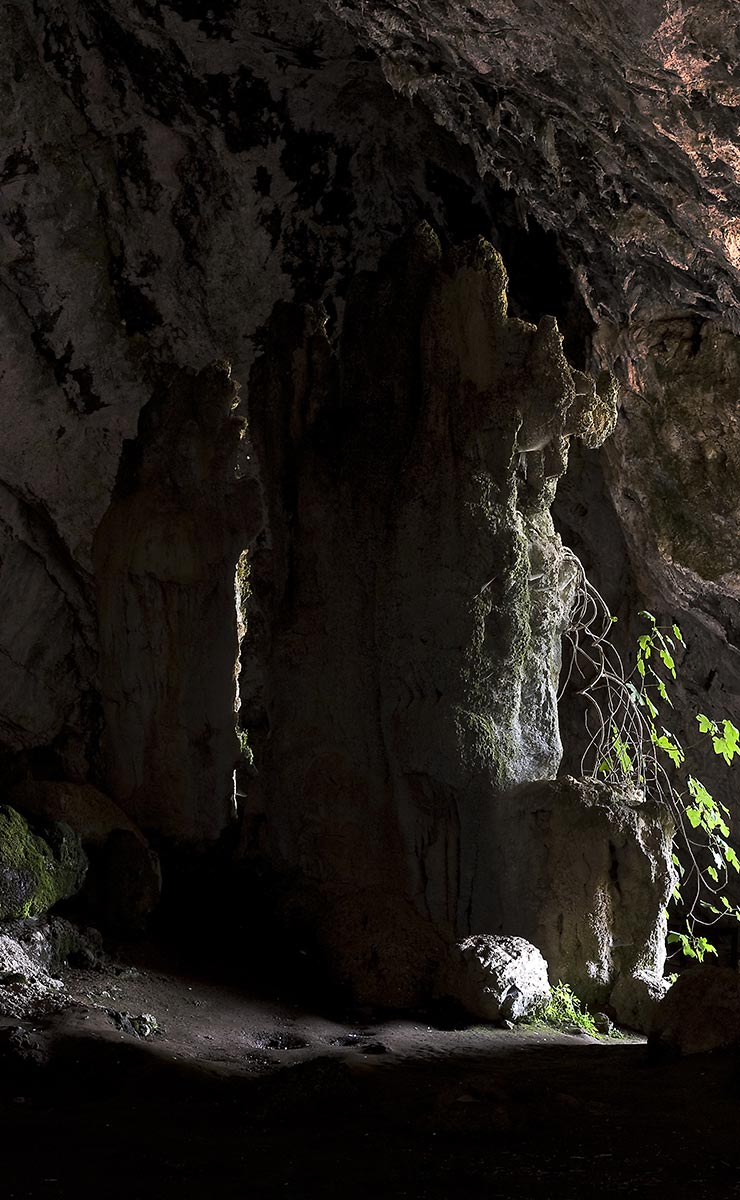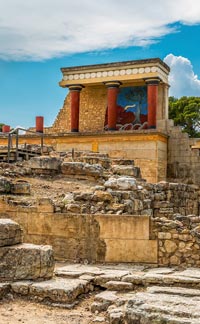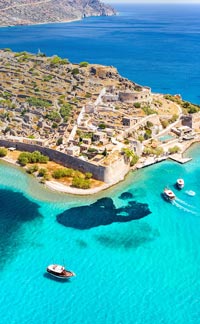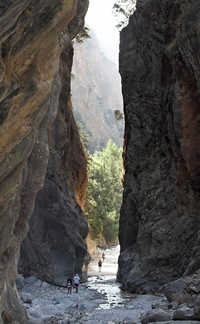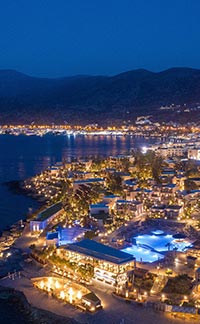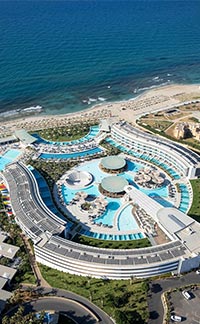In far western Crete, on the road running south through the mountains from Chania to Elafonissi, you go through a steep-walled valley known as the Topolia gorge. This is just south of the village of Topolia. A couple km later, above you and on the right, is the opening for the cave of St. Sophia. There's a wide spot in the road to park, and then you have to climb a lot of rock stairs to get to the cave mouth. On the way you'll come to a taverna built on a shelf about 15 m above the roadway. It offers a wonderful panorama of the surrounding mountains should you feel you need some refreshment after your visit the cave.
If you happen to go in the springtime, look for the strange flower called the dragon lily, which was connected to the God Apollo. It's stem has markings curiously similar to a snake's body: brown-speckled splotches on a white background. The single spathe (leaf-like blossom) looks like an elongated, inside-out hood and is a deep purple-red in color, with a long, thin spadex emerging from its center and looking like a dark purple lizard's tail. Greeks, always an imaginative lot, thought this might be the tail of a small dragon hiding in the flower. It smells like rotting meat, to attract flies which carry away the flower's pollen on their legs to fertilize other dragon lilies.
Just inside the large cave entrance (which throws a lot of light into the cave), there is a little church with a metal star mounted on top of its facade. It shares its name with the cave; the church of Agia Sophia (Holy Wisdom). The cave's central chamber is 20m high and 70m in diameter. It's full of rock formations, chiefly stalactites and stalagmites. tight against the left side of the cave, the church's left wall is the wall of the cave itself.
The stalactites and stalagmites are very long and thick, given the great height of the ceiling. Unlike what is often seen in other caves with a lower clearance, the formations have not yet met to form columns. One particular stalagmite, shaped like a woman, is kept whitewashed. Another stalagmite and rock ensemble uncannily resembles a rather fat unicorn. Small fig trees have taken root in different places where there is a medium for them to grow in and light to nurture them. The cave is extremely humid, which has contributed to the grown of algae on the faces of some of the rocks.
The cave has been in use a very long time; both Neolithic and Minoan-age artifacts have been found. It was considered sacred to Britomartis, the Minoan forerunner to the goddess Artemis.
One relatively modern story connected with the cave says a Cretan rebel (against the Turks) named Psaromilingis was brought to the cave by his father and uncle. Psaromilingis had been convicted of rebellion against the Ottoman authorities and was sentenced to death. The Ottomans had offered a general pardon to rebels who would bring in the heads of their own brothers. Psaromilingis wouldn't think of this, so, once at the cave, his father and uncle, had been trying to get the young man to kill them, so that Psaromilingis, who was younger and stronger, could continue the fight. Since the young man refused to kill the older men, they committed suicide. At which point, figuring he had nothing to lose, Psaromilingis cut their heads off, offered them to the Turks, who accepted them. Psaromilingis had his pardon.
The cave has an endless variety of rock formations, all of which change color slightly in the shifting light as the day progresses. There is a festival held at the cave every Easter and Christmas eve day.

